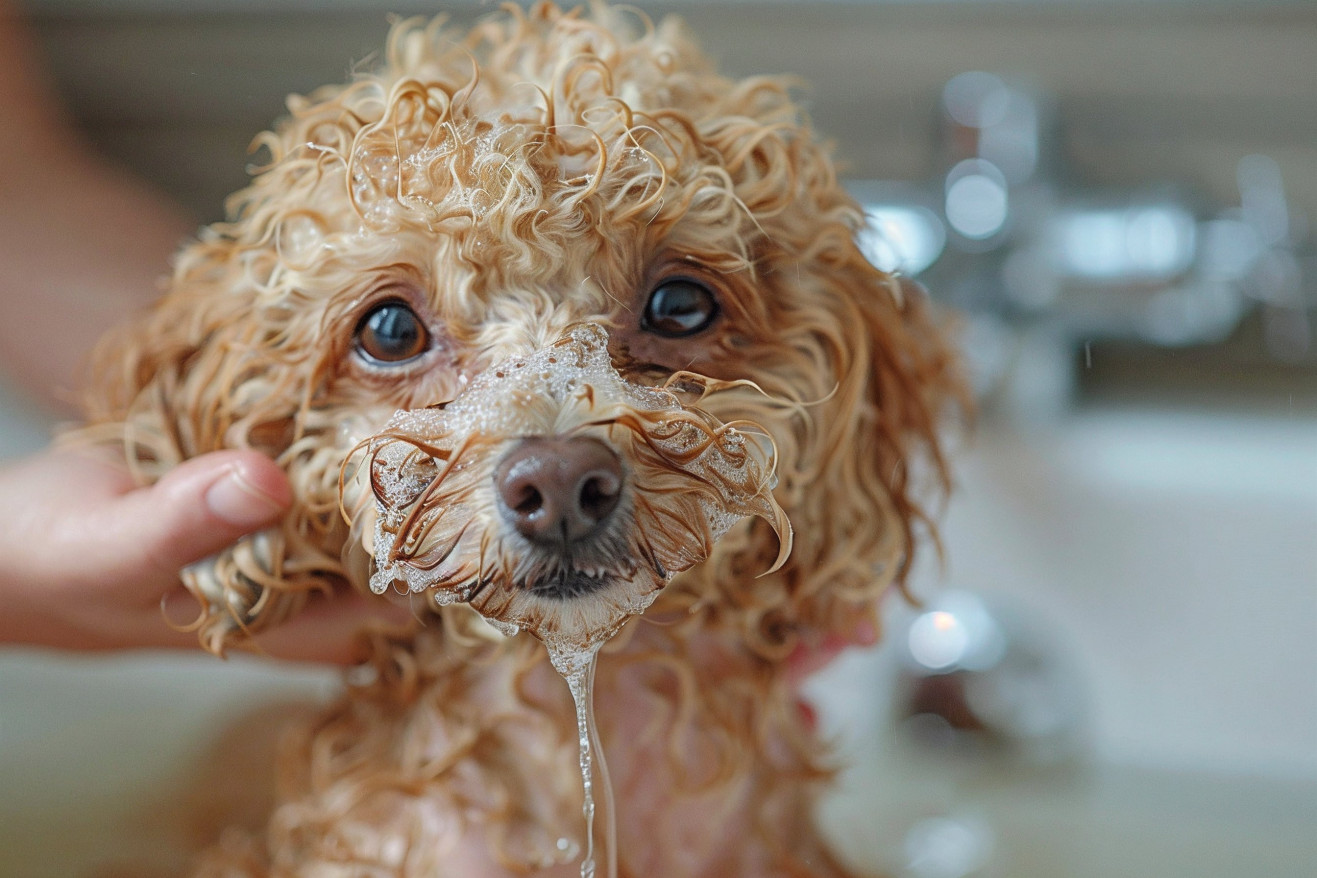How to Get Tree Sap Out of Dog Hair: Safe and Effective Techniques
14 April 2024 • Updated 13 April 2024

If your dog's hair has become matted due to tree sap, you're in a sticky situation. However, there are a number of safe and effective ways to get the stubborn resin out of your dog's coat. The most important thing is to act fast before the sap hardens, and then use a substance like vegetable oil, peanut butter, or a commercial de-matting product to gently dissolve the sap so you can brush or comb it out.
We will cover a range of methods recommended by veterinarians, from DIY solutions to products made specifically for grooming. By learning about the nature of tree sap and how it interacts with hair, you will be better equipped to know which methods will work best. With the right supplies and a little patience, you can get your dog's hair back to its soft, sap-free state and prevent future matting.
How can I get tree sap out of my dog's fur?
How to Tell If Your Dog Has Sap in Their Fur
Before you can remove sap from your dog's fur, you need to know how to tell if your dog has sap in their fur. This is the first step in the removal process. Look for clumps of fur that are stuck together or a sticky residue on your dog's fur, according to the AKC. You may also notice a strong pine smell, which is a sign that your dog has sap in their fur. It's also important to tell the difference between fresh sap and dried sap, according to Veterinarians.org, as the removal process will be different.
Fresh sap will be wet, sticky, and pliable, while dried sap will be hard and crusty. Make sure to check hard-to-see areas like between the toes and in the armpits, where sap can build up without being noticed. You may also notice that your dog is uncomfortable if they have sap in their fur. Signs of discomfort include excessive scratching, restlessness, and aversion to being touched, according to 8BillionTrees.
It's important to check your dog from head to toe to make sure you find all of the sap before you start the removal process. If you miss even a small amount of sap, it could lead to further matting and skin problems. Once you know the extent of the problem, you can decide how to safely and effectively remove the sap to make your dog more comfortable and improve the condition of their coat.
Safe and Effective Ways to Remove Sap
The Olsen Veterinary Clinic explains that if the sap is hard, you will first need to soften it with a hairdryer on the lowest setting. This will help the sap let go of the dog's fur and make it easier to remove.
Rover.com suggests using natural oils like olive, vegetable, or even peanut butter to break down and dissolve the sap. Apply the oil to the affected areas and gently massage it in, making sure to let it sit for a few minutes so it can fully saturate the sap. Then, use your fingers or a wide-toothed comb to gently and slowly work the sap out of the fur.
As the AKC points out, it's important to be patient and take your time with this process, making sure to take breaks to prevent the fur from getting matted and to prevent your dog from getting uncomfortable. If there are any clumps of sap that are particularly stubborn, the Veterinarians.org guide recommends that you trim them off with scissors, but only as a last resort. Be sure to be very careful and avoid cutting your dog's skin.
By using the right methods and working slowly and patiently, you can get even the most stubborn sap out of your dog's fur. Once the sap is gone, it's time to clean and condition the fur so it can be healthy and sap-free once more.
Thorough Bathing and Follow-Up
Once you have successfully removed the sap from your dog's coat, it's important to give them a thorough bath with a mild pet shampoo to ensure that all traces of the sap are gone, as per Rover.com. The AKC recommends using a final rinse of apple cider vinegar or other natural rinses to help cut through any remaining oils and sap.
Make sure that your dog is completely dry after their bath to avoid any residual dampness that could lead to skin issues or matting, according to Veterinarians.org. Check your dog's coat and skin carefully for any remaining sap or any signs of irritation or redness. If you notice any issues, apply soothing lotions or oils to the affected areas, as per the Olsen Veterinary Clinic.
Finally, keep a close eye on your dog for any signs of having ingested sap, such as vomiting or diarrhea, and contact your vet immediately if you notice any of these symptoms or any other concerning signs, according to 8BillionTrees. With thorough bathing and follow-up care, you can make sure that your dog's coat is back to normal and free of sap.
How to Avoid Future Sap Entrapment
There are definitely some things you can do to avoid sap from getting stuck in your dog's fur in the first place. For example, the TryFi blog post suggests that you can keep your dog's fur well-groomed and trimmed, especially during the spring and fall sap seasons, to help prevent sap from getting stuck in their fur.
The Ontario SPCA and Humane Society also suggests using protective measures like dog boots or paw wax to create a barrier between your dog's fur and surfaces that may be covered in sap. In addition, the TryFi guide suggests that you can train your dog to avoid areas with sap-producing trees or even fence off these areas to help prevent future sap entrapment.
Of course, it's also important to stress the importance of regular grooming and checking for sap, especially after outdoor activities that involve your dog being near trees. As Musher's Secret points out, their dog paw wax can help break down and remove heavy sap deposits. By following these tips, you can help ensure that your dog's coat stays healthy and free of sap.
Dealing With Health Risks
The consumption of sap can lead to several health risks for dogs, such as gastrointestinal upset, vomiting, and diarrhea. The Autograph Tree is Toxic to Dogs 🐶 article notes that the Autograph Tree (Clusia Rosea) is especially toxic, leading to nausea, depression, and possible organ failure. Meanwhile, the House Pine Poisoning in Dogs article explains that the sap from house pine plants can cause allergic reactions and skin irritation.
If you think your dog has consumed sap, you should take them to the vet immediately, especially if you notice any of the more severe symptoms like tremors, seizures, or abnormal pupil response, which are listed in the JustAnswer.com discussion. The vet may need to induce vomiting, administer IV fluids, or take other steps to treat the toxicity.
To prevent your dog from consuming sap, you can use protective measures like Elizabethan collars or keep your dog away from plants that are known to be toxic, such as the Pencil Cactus. Quick action and close observation are important to avoid complications from sap exposure. However, with the right precautions and medical attention, you can protect your dog from the risks of sap consumption.
Conclusion: Keeping Your Dog's Coat Sap-Free and Healthy
The most important things to remember from this article are that it's important to act quickly to remove sap from a dog's fur and that a combination of softening, dissolving, and gentle extraction techniques are the most effective ways to do this. Thorough cleaning and aftercare are important to ensure that your dog's coat is healthy and free of sap.
Preventative measures like regular grooming and the use of protective products can help reduce the risk of sap entrapment and the potential health problems that can result. By following these tips, dog owners can help ensure that their pets are comfortable and their coats are healthy.


